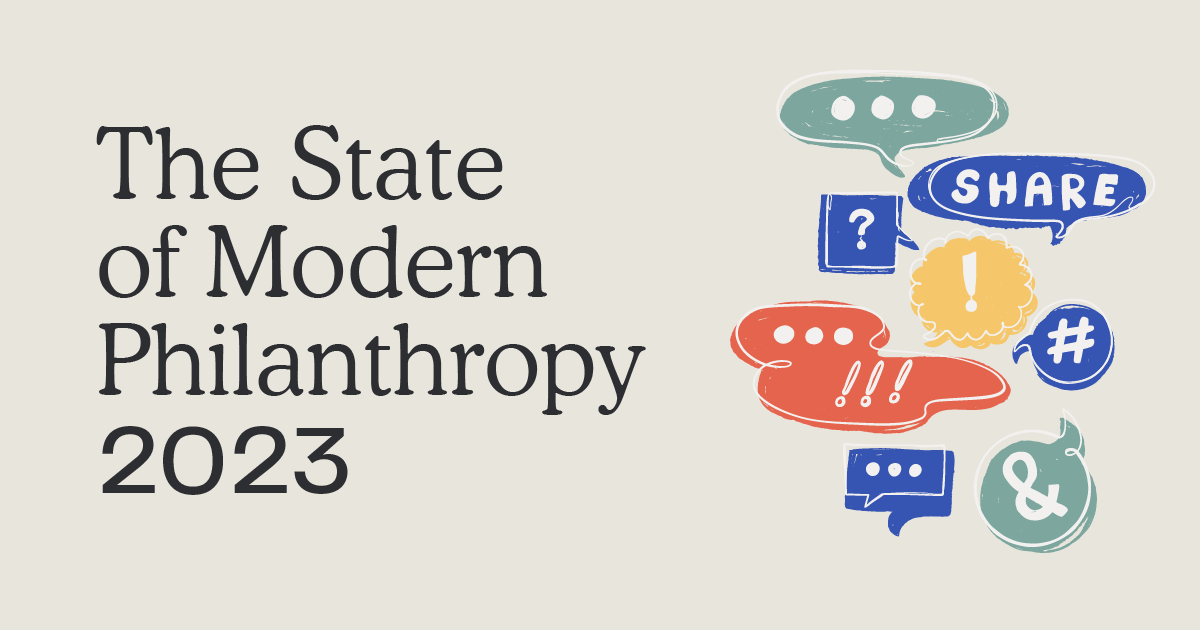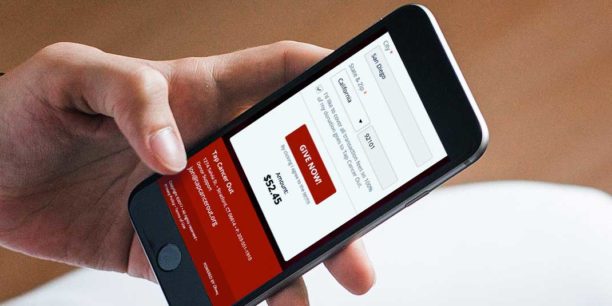5 Major Reasons to Diversify Your Nonprofit Revenue Streams

Your nonprofit has an incredible mission that relies on strong relationships with supporters. In our recent data analysis of fundraising effectiveness in The State of Modern Philanthropy 2023 report, it was clearer than ever that when you provide the right experience to the right supporter at the right time, you can expand your reach and the long-term potential for your cause.
It’s all about identifying and executing diversified nonprofit revenue streams. We’re giving you the inside scoop on everything you need to know here today.
Evaluating Your Nonprofit Revenue Streams
Diversifying your fundraising portfolio with multiple nonprofit revenue streams is crucial to your organization’s sustainability. Like a financial advisor wouldn’t recommend investing your life savings into one unstable stock, your nonprofit shouldn’t solely depend on a single source of revenue to keep it afloat.
Additionally, diversification opens new pathways for donors to get involved. So the more options they have to support you, the more likely they are to participate and deepen their connection to your cause.
Did you know: Supporters who participate in multiple campaign types are 4x more valuable than supporters who participate in a single campaign type?
Read Our Latest Fundraising Trends Report
A diversified fundraising portfolio gives you peace of mind in knowing that you can handle the things you can’t control and that you’ll be able to bounce back when the next crisis hits. It also ensures that a wider audience of supporters can participate in your mission through your various tailored experiences.
The past few years of pandemic health crises and economic fluctuations only solidified that there will be times of uncertainty. Those experiences challenged the sector to get creative about fundraising diversification strategies to mitigate the risk of loss in the future.
Additionally, it reminded nonprofits how critical it is to offer supporters multiple avenues to engage with causes, understanding that people may not be able to contribute in the traditional ways they once did. Implementing peer-to-peer fundraising, hybrid fundraising events, and streamlined direct giving were, and still are, foundational to nonprofits’ sustainability.
If your nonprofit hasn’t already committed to diversifying its revenue streams, consider bringing this list to your board members or team to explain how crucial it is in sustaining your organization’s impact.
5 Reasons to Diversify Your Revenue Streams
1. Mitigate Risk
You can’t eliminate risk, but you can prepare to mitigate it. Diversifying your revenue streams could save your nonprofit from potential financial hardship amid an economic downturn, health crisis, or shift in political policy.
The first step to mitigating risk is analyzing your current revenue streams and determining what percentage of the pie you want to allocate to each source. A few sources all nonprofits should have, regardless of organizational size, include the following:
- Peer-to-peer fundraising platforms
- Recurring giving
- Fundraising events (which include an in-person and virtual component)
Once you pinpoint all your nonprofit revenue streams, calculate each source as a percentage to identify potential trouble spots. If that source carries most of the weight, brainstorm ways to redistribute it or add another reference to supplement your fundraising efforts. That way, you protect your income flow.
2. Improve Adaptability With New Technologies and Trends
Personalization and connection are at the heart of today’s donor interactions. People are passionate and want to engage with nonprofit organizations they care about but also expect to do that in the same way they interact with for-profit brands they love. Think about the way artificial intelligence, social media updates, and intuitive apps shape how we seek information and take action.
Did you know: The State of Modern Philanthropy 2023 found that people spend 88% of their time on mobile using apps rather than the web?
Organizations can reach the right new donors where they already are by aligning fundraising engagement to their interests and offering multiple ways to get involved.
New revenue streams might look like:
- Recurring giving programs that offer the simplicity of spreading out gifts over time through popular subscription models introduced
- Peer-to-peer fundraising campaigns that pull in social engagement and influence
- Embedded giving experiences that allow donors to check out without ever leaving the page or pop up when a donor visits your website
- Virtual fundraising events that unite people around the world
Adapting quickly offers you greater bandwidth to assess your community’s current needs and provide real-time solutions. It also helps you keep a pulse on future evolutions in technology-driven experiences. There are so many tools for public charities to stay virtually connected with audiences and advance missions in entirely new ways.
How AI is Changing the Search Landscape
3. Save Time and Resources
Not all sources of funds will align with your organization and its stakeholders, so consider the pros and cons of each fundraising initiative’s revenue stream. Depending on your nonprofit’s size, needs, and current bandwidth, the cost versus benefits of each source will vary.
For example, applying for specific government grants may cost your organization more money in the long run. These expenses could outweigh the benefits of the grant. This is an example of how to get ahead by investing those application costs into a creative social media ad or event that might bring you directly to charitable contributions and relationships.
Regardless of the revenue stream you establish, start with smaller SMART goals and gradually increase your benchmarks. For example, your long-term objective to double the revenue of your recurring giving program can start with a promotional crowdfunding campaign to capture recurring gifts. Kick off the campaign with a few conservative goals regarding donor acquisition or the number of recurring gifts, then refine your efforts through more targeted efforts as it evolves.
4. Expand Your Reach
A nonprofit can’t sustain its mission without visibility. Diversifying your income streams can open the door to building connections with local businesses, government agencies, and the general public. The more visible you are, the more people you can get involved in your efforts.
So consider experimenting with different campaigns, such as crowdfunding and recurring giving, to ensure you appeal to all audiences and how they prefer to take action on your organization’s behalf. Each campaign type has a specific call to action, so experiment with each to see which ones are best received.
Here are a few more best practices to think about:
- Include a virtual component in all fundraising campaigns to reach a wider audience
- Extend your campaign dates to provide more time for individual donors to contribute
- Offer multiple payment options (like credit cards, ACH payments, Apple Pay/Google Pay) on your donation form to improve the donor experience
- Attend nonprofit conferences to grow your network
5. Grow Your Partnerships
Your nonprofit can benefit tremendously from corporate giving partnerships and sponsorship opportunities. The more you increase the ways individuals get involved, the more you can attract funders who resonate with the various campaigns you offer.
For example, you might decide to host a few virtual events to expand your nonprofit funding and open sponsorships. The sponsors for those few events can be so impressed by your cause and your team that they build employee-giving programs around it. It’s always nice to have a list of major donors and companies to help you advance your programs even further through financial contributions, matching gifts, in-kind donations, and awareness.
Guide to Pitching to Corporate Sponsors
Diversify Your Nonprofit Revenue Streams on Classy
Revenue diversification isn’t about overhauling your entire fundraising plan but adding some new elements that benefit you in all these ways and more. As you build new campaigns into your repertoire, keep humanistic messaging at the center of your donors’ experience and engage audiences that become loyal supporters you can rely on.
Classy offers nonprofits the technology to elevate stories and build campaigns that feel consistent and simple to passionate individuals ready to give and make a difference. Book a demo today to discover how our technology and hands-on collaboration can result in increases of 2x your revenue and 100x your impact.
Copy Editor: Ayanna Julien

Get the Latest Fundraising Trends


